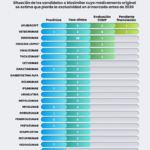Interchangeability refers to the possibility of performing a therapeutic exchange between two drugs. In other words, it refers to the "medical practice that consists of changing a medication for another that is expected to obtain the same clinical effect in a given clinical picture and in any patient at the initiative —or with the consent— of the prescribing physician" , as explained in the document 'What you should know about biosimilar medicines' published in 2014 by the European Commission and in whose preparation the EGA participated, now known as 'Medicines for Europe'.
A medicine is considered to be interchangeable if it can be administered or dispensed instead of another clinically equivalent product to a given patient. Thus, regulatory scientific data published through the EPAR (European public assessment report) and other rigorous sources, should guide prescribers' decisions regarding interchangeability.
El therapeutic exchange It is a frequent hospital practice among medicines of biological origin, even among original products. Exchanges are made for pharmacological reasons (changes in efficacy and/or safety to a treatment), experimental and even economic.
biosim In its definition of exchange, it estimates the low risk of switching from an original product to a biosimilar or vice versa, saying that prescribing physicians sometimes change a biological treatment in a given patient for another analogue, for clinical or other reasons.
This practice, called swapping, is frequently applied between originator biologics with no particular ill effects reported. For this reason, it is estimated that the reciprocal exchange between two products that have exceeded a comparability exercise as comprehensive as the biosimilar and its corresponding originator reference product, it should not be associated with significant clinical risk. In any case, it is the prescribing physician who, in light of the evidence, must establish the convenience, or not, of exchanging both products.
The registered data, experimental and in real clinical practice, up to now in the use of biosimilars with respect to the original reference biologics support the idea that the risk of reciprocal exchange is very low. It is advisable to continue to carry out rigorous monitoring of its use in order to confirm it.
Precisely, due to the exhaustive demonstration of equivalence between both products, and the fact that they essentially share the same active principle (same DCI), if a patient who is administered an original biologic causes therapeutic failure or induces effects collaterals that advise modifying the treatment, it would not be scientifically justified to exchange the original biologic for the corresponding biosimilar.




